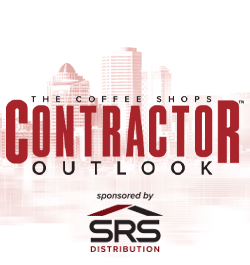UP TO THE MINUTE
Effective cash flow management year-round and in winter for roofing contractors
January 23, 2025 at 2:30 p.m.CCS Influencer John Kenney says implementing sound cash flow strategies throughout the year and paying extra attention during winter, contractors can maintain financial stability.
Managing cash flow is one of the roofing contractors' biggest challenges, especially during the slower winter months. I have seen firsthand how proper financial planning and discipline can mean the difference between surviving the off-season and struggling to keep the doors open. By implementing sound cash flow strategies throughout the year and paying extra attention during winter, contractors can maintain financial stability and be ready for opportunities as soon as the busy season starts.
Creating a realistic budget and revenue forecast is one of the first steps to manage cash flow effectively. Project monthly income and expenses, factoring in potential slow periods and peak seasons. Forecasts should be regularly updated as you secure new projects or experience unexpected costs. A clear understanding of when cash is coming in and going out allows you to plan for shortfalls and look for ways to bridge financial gaps before they become critical.
Maintaining a healthy reserve fund is another essential strategy. Set aside some of your profits during the busy months to cover expenses when work slows down. This reserve can help cover overhead costs, payroll and other fixed expenses without using high-interest loans or credit lines. Even a modest reserve can make a significant difference during lean winter months, giving you the flexibility to keep essential staff and invest in marketing or minor equipment upgrades.
Invoicing promptly and following up on outstanding payments is crucial for steady cash flow. Contractors often focus on getting the job done but delay sending invoices, leading to longer payment cycles. Establish a clear billing schedule, ideally invoicing as soon as work is completed or milestones are reached and communicate payment terms upfront with clients. If you encounter delays or partial payments, be proactive in your follow-up and consider offering small incentives for early or on-time payments to encourage faster cash inflows.
During the winter, when demand for roofing services often drops, diversify your offerings or take on supplemental work to keep revenue flowing. Promoting off-season services can keep crews busy and maintain an income baseline. Be creative in identifying ways to utilize your workforce and resources, such as offering snow removal in colder regions or winter maintenance packages to property managers.
Keeping overhead costs under control is equally important. Rent, utilities, equipment storage and payroll can deplete cash reserves if not managed carefully. Review your overhead expenses regularly to identify potential savings, such as negotiating better lease terms, reducing energy consumption or renegotiating supplier contracts.
Securing a line of credit or maintaining strong relationships with financial institutions can also provide a safety net. Even well-prepared contractors may face unforeseen circumstances, like sudden equipment breakdowns or delayed payments from large accounts. Having pre-approved credit or a good rapport with a lender ensures you can cover short-term cash flow gaps without scrambling at the last minute. The key is to use these options responsibly and only when necessary to avoid unmanageable debt.
Finally, communication is vital. Keep your team informed about the company's financial goals and any changes in work schedules or budgets, especially in winter. When everyone understands the plan, they are more likely to support cost-saving measures and help find creative ways to maintain profitability. By combining proactive planning, disciplined budgeting, diverse service offerings and strong financial relationships, roofing contractors can successfully manage their cash flow year-round and confidently navigate the winter season.
John Kenney is the CEO of Cotney Consulting Group. See his full bio here.





















Comments
Leave a Reply
Have an account? Login to leave a comment!
Sign In